| Umělec 2004/1 >> Sleepwalking in Berlin | Просмотр всех номеров | ||||||||||||
|
|||||||||||||
Sleepwalking in BerlinUmělec 2004/101.01.2004 Travis Jeppesen | biennale in Berlin | en cs |
|||||||||||||
|
After a night of heavy drinking, I crawled out of an uncomfortable hostel bed, somewhat ready to make my way over to the nearby KunstWerke, one of the two main venues for this year’s installment of the Berlin Biennale. Over breakfast, we sifted through the contents of the press packet. This year’s artistic director, Ute Meta Bauer’s unique conception is to organize the berlin biennale (I learn from the press packet that it’s supposed to be spelled in lower-case letters for some annoying reason) around five so-called hubs. A hub, the press release explains, is the term used for the distribution system of a digital network or for an airport used as a center for plane travel.
“So the biennale is, like, a computer,” I mused over scrambled eggs. “No,” my companion corrected me. “It’s a computer for jet setters. Don’t you get it?” “I’m totally confused,” I admitted. “The last biennale was in 2001. The one before that was in 1998. So why do they call it the biennale instead of the triennale?” As we would soon find out, the triennale’s, I mean the biennale’s hubs are mainly employed as metaphors for the five basic themes that permeate the exhibition, themes that are all linked to Bauer’s interests in art, architecture, and sound and their relationship to feminist and socio-political discourses. They are Migration, Sonic Scapes, Fashions and Scenes, Other Cinemas, and Urban Conditions. All of the art painfully conforms to the theme of one or more of these hubs, with the rather detrimental effect that the artwork assumes a secondary role to the ideological framework of the biennale itself. A biennale is meant to be a survey encompassing many trends in contemporary art from around the world. Given the size and budget restraints, Bauer’s approach was to narrow the focus on Berlin itself, effectively offering us a repeat of the theme of the very first berlin biennale. Like most western urban centers of culture, Berlin is self-absorbed. Despite the daunting futuristic architecture that seems to loom over every horizon, the city is still very much obsessed with its own past, its unique geographical position encompassing the formerly divided East and West, as well as its more recent emergence as the epicenter of art, music, sociocultural experimentation, clubbing, and general trendiness. This inward gaze has momentarily landed the city in a state of cultural stasis, unbeknownst to most of its inhabitants, including the organizers of this year’s biennale. That is to say that the organizers and most of the artists included in this year’s biennale aren’t interested in what a future Berlin might look like; they’re content to sit back and continue the same discussion that’s been going on since the fall of the Wall, one that is by now inflected with as many clichés as inanities, as suggested by all the Berlin-related work on display. This raises the inevitable question: Who is the biennale meant for? Is it meant to appease Berliners’ desires for self-recognition with its clunky didacticism, or are these hubs meant to serve as informative displays for tourists whose knowledge of Berlin doesn’t extend beyond the second world war? These are the questions I asked myself after arriving at a glass display case containing articles about Berlin from trendy western magazines. There is nothing more embarrassing than a middle-aged art world professional desperately trying to prove how hip she is. Unfortunately, this seems to be the real motive behind the program of Bauer and her collaborators. There’s really no other valid explanation for including a pathetic video of two women wearing skirts with feminist statements sewn into the fabric, dancing to a song by the feminist postpunk group Le Tigre, in an exhibition of this stature. Actually, all of the work in this year’s biennial smacks of the sort of empty jargon-laden political correctness that the art world loves to congratulate itself for promoting. All of the displayed works were carefully chosen in accordance with the exhibition’s liberal utopian ideals, and all of it is grounded in the premise that art promoted through traditional institutional means can be used as a tool to educate the masses — itself a tried-and-failed utopian ideal. We are not supposed to have an aesthetic experience at this year’s biennale; we are supposed to learn something. This is apparently supposed to account for the piss-poor quality of much of the work on display. When creativity fails, we can always announce our good intentions without any embarrassment. As Gertrude Stein once wrote, literature is not comments. To this, I would like to add: art is not information. Visitors to this year’s biennale will spend more time reading than they will looking. We are bombarded by propaganda on every side, most of which we already knew, or otherwise could’ve easily found on the internet. In accordance with the organizers’ left-wing agenda and their overwhelming need to overstate the obvious, there is not a single provocative work in the entire exhibition. Apparently, when one is so politically involved, a sense of humor is absolutely forbidden. The organizers seem to be sending an encoded message to all would-be artists out there: “Think like us, you’ll be richly rewarded. Just don’t try to offend our ideals or make us laugh; anyway, we’ve forgotten how to.” Of course there are loads of contemporary Eastern European artists who are managing to combine humor with political criticism. Although one feels that the highly ambiguous irony employed by groups like IRWIN and Rafani would probably give Bauer an ulcer. Sadly, the number of Eastern European artists represented at this year’s biennale can be counted on one hand. Of those present, most have immigrated to the West. This is particularly puzzling given the overall orientation of the exhibition. Anyone familiar with Berlin is aware of the vast civic pride in the city’s Eastern European heritage, as well as the fading disputes between Ossies and Wessies. But the East isn’t the only area overlooked by these wannabe trendoids. Berlin is known among other things for being the street art capital of Europe. This is obvious to anyone with eyes who has spent any length of time walking the city’s streets. Why are there no graffiti artists included in this Berlin-centric exhibition? What about all the weirdo painters and sculptors and misfits working outside of Berlin’s established gallery system? I suppose they had to make room for the fashion designers who’ve moved in to Mitte, effectively aiding the former East Berlin city center (where KunstWerke is comfortably nestled) transform itself into the New Berlin’s equivalent of New York’s SoHo. According to the exhibition catalogue, fashion “is a complex realm that goes beyond apparel, shifting trends or the picking-over of past styles…It plays a central role in the creation of identity and the process of self-dramatization.” The catalogue neglects to mention in its paragraph-long definition that fashion is, above all else, capital. The merging of the fashion world and the art world that began in the ‘80s and has continued to this day is the worst thing to have happened to contemporary art; similarly, the recent fusion of music and fashion as seen in such electroclash acts as FischerSpooner is one of the most idiotic things ever to happen in the history of popular music. None of the fashion, art, or writing comprising this exhibition offers any attempt to engage in this highly relevant discussion. The answer, then, is simple: art and fashion are one and the same. We’re going to change the world with our horrible art, and look great doing it! One of the more interesting segments (I’m tired of using the word hub) is Sonic Scapes. Bauer was wise to include these artists who are doing interesting work, but who are often overlooked in major exhibitions simply because they are working in the medium of sound. Mika Taanila’s film The Future Is Not What It Used To Be, provides an intriguing portrait of Finnish electronic music pioneer Erkki Kurenniemi, whose profound philosophical musings suggest a future merger of art and science. Next door, Mika Vainio’s Sound Chamber Berlin uses the sounds of the city to create a thunderous yet meditative enclave removed from the rest of the exhibition. The somewhat ambiguous theme of noise continues with Florian Hecker’s cacophonous computer-generated aural disturbance, Acid Phase Inversions 1 & 2. Less potent is the other major theme of Sonic Scapes, women in electronic music and rock. In addition to the above-mentioned video by a collective known as A Room of One’s Own, you’re also forced to contend with Maria Bustnes’s optimistic Girl Band Project, which is so cute, I’m surprised the KunstWerke doesn’t have someone passing out barf bags at the entrance. After watching a music video of this astoundingly untalented band of Swedish teenagers, we end up at what I think is supposed to be the climax of this particular hub, consisting of videos, magazine articles, and albums that every Berlin hipster has at home (Peaches, Yoko Ono, Chicks on Speed, etc.) I suppose this is all intended to teach us that female rock stars are just as powerful and talented as male rock stars. If you weren’t aware of this fact before you walked in to this exhibition, then you probably have a very small penis. In the end, the biggest problem with this year’s berlin biennale is that it coheres too well. Every single one of the artists have put forth similar boring utopian projects; the underlying idea seems to be “unity in homogeneity,” as evidenced by the endless photographs of empty industrial landscapes, indistinguishable from one another, telling us nothing other than the landscape is empty and industrial. A proper biennale is meant to be a broad survey of contemporary art encompassing both well-known and younger artists. At this biennale, a few of the artists are young, but I hadn’t heard of any of them prior to this exhibition. The only art work allowed must conform to a strict ideology, which the key players don’t seem to realize is outdated. Anyway, so much of the art is buried under a mass of fashion, pop music, film screenings, and propaganda, leaving me to wonder why they even bothered to include any art at all.
01.01.2004
Рекомендуемые статьи
|
|||||||||||||
|
04.02.2020 10:17
Letošní 50. ročník Art Basel přilákal celkem 93 000 návštěvníků a sběratelů z 80 zemí světa. 290 prémiových galerií představilo umělecká díla od počátku 20. století až po současnost. Hlavní sektor přehlídky, tradičně v prvním patře výstavního prostoru, představil 232 předních galerií z celého světa nabízející umění nejvyšší kvality. Veletrh ukázal vzestupný trend prodeje prostřednictvím galerií jak soukromým sbírkám, tak i institucím. Kromě hlavního veletrhu stály za návštěvu i ty přidružené: Volta, Liste a Photo Basel, k tomu doprovodné programy a výstavy v místních institucích, které kvalitou daleko přesahují hranice města tj. Kunsthalle Basel, Kunstmuseum, Tinguely muzeum nebo Fondation Beyeler.
|







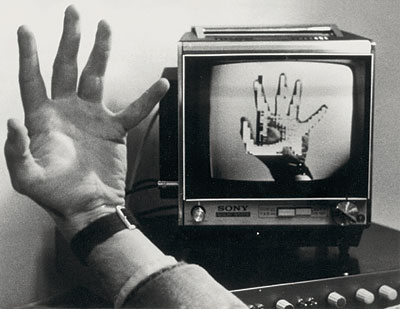







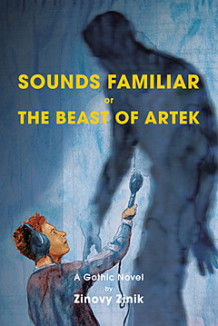






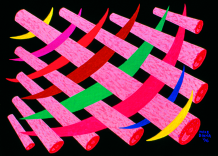




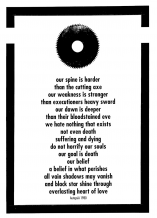
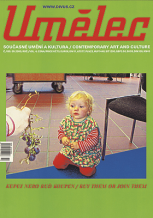
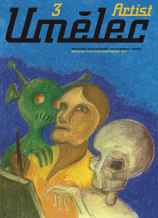
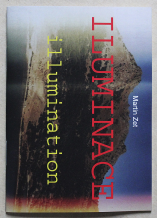


 We Are Rising National Gallery For You! Go to Kyjov by Krásná Lípa no.37.
We Are Rising National Gallery For You! Go to Kyjov by Krásná Lípa no.37.
Комментарии
Статья не была прокомментированаДобавить новый комментарий